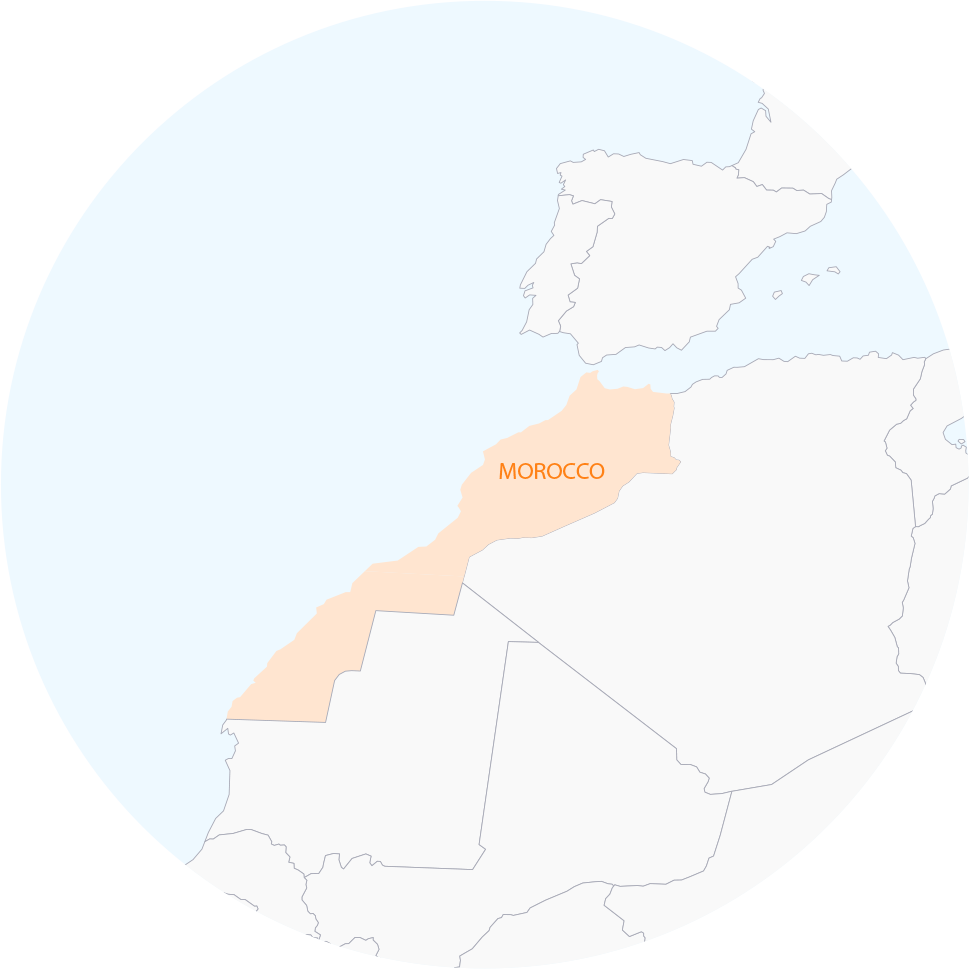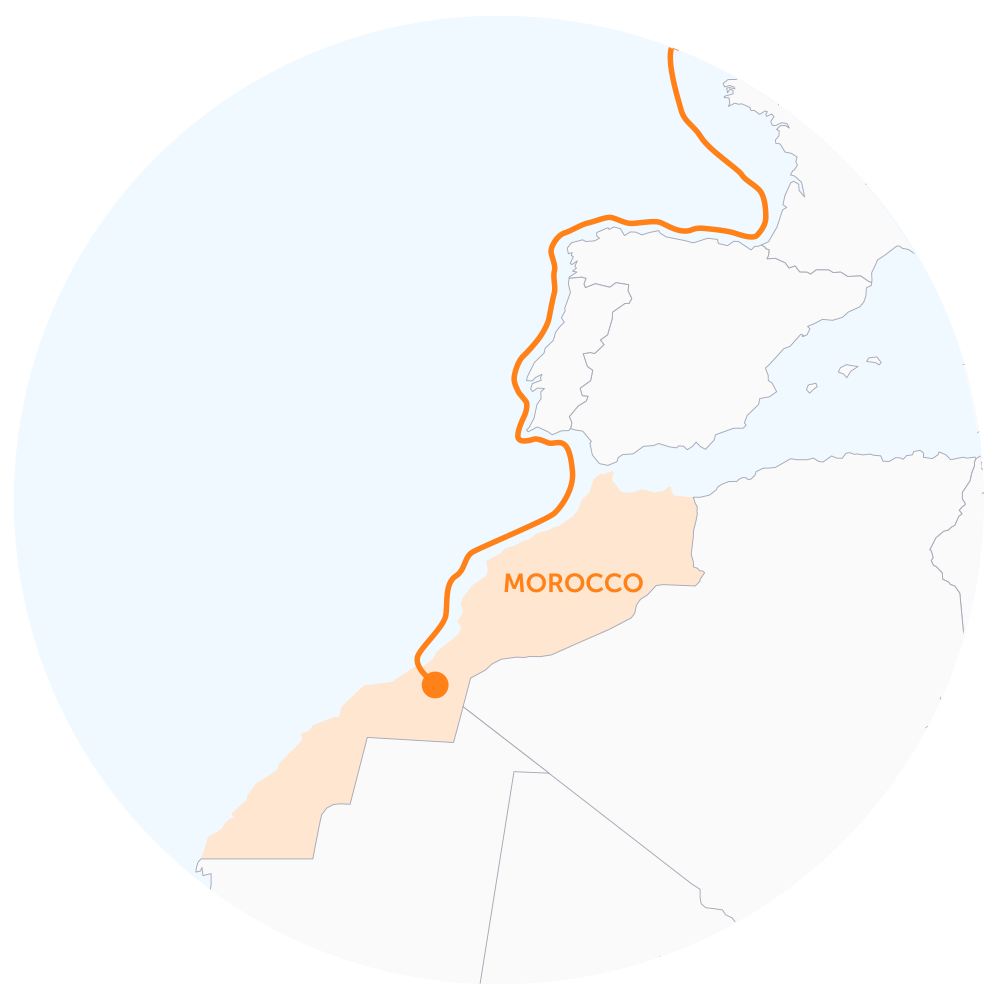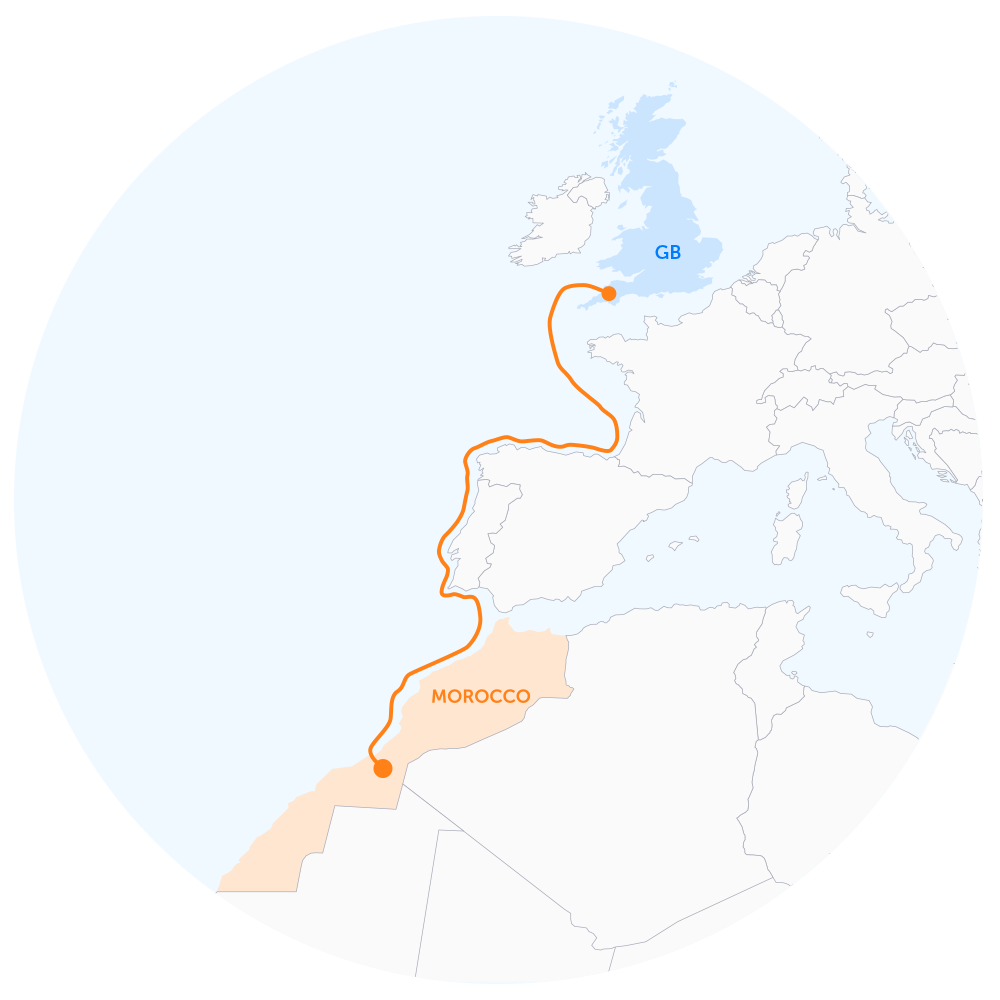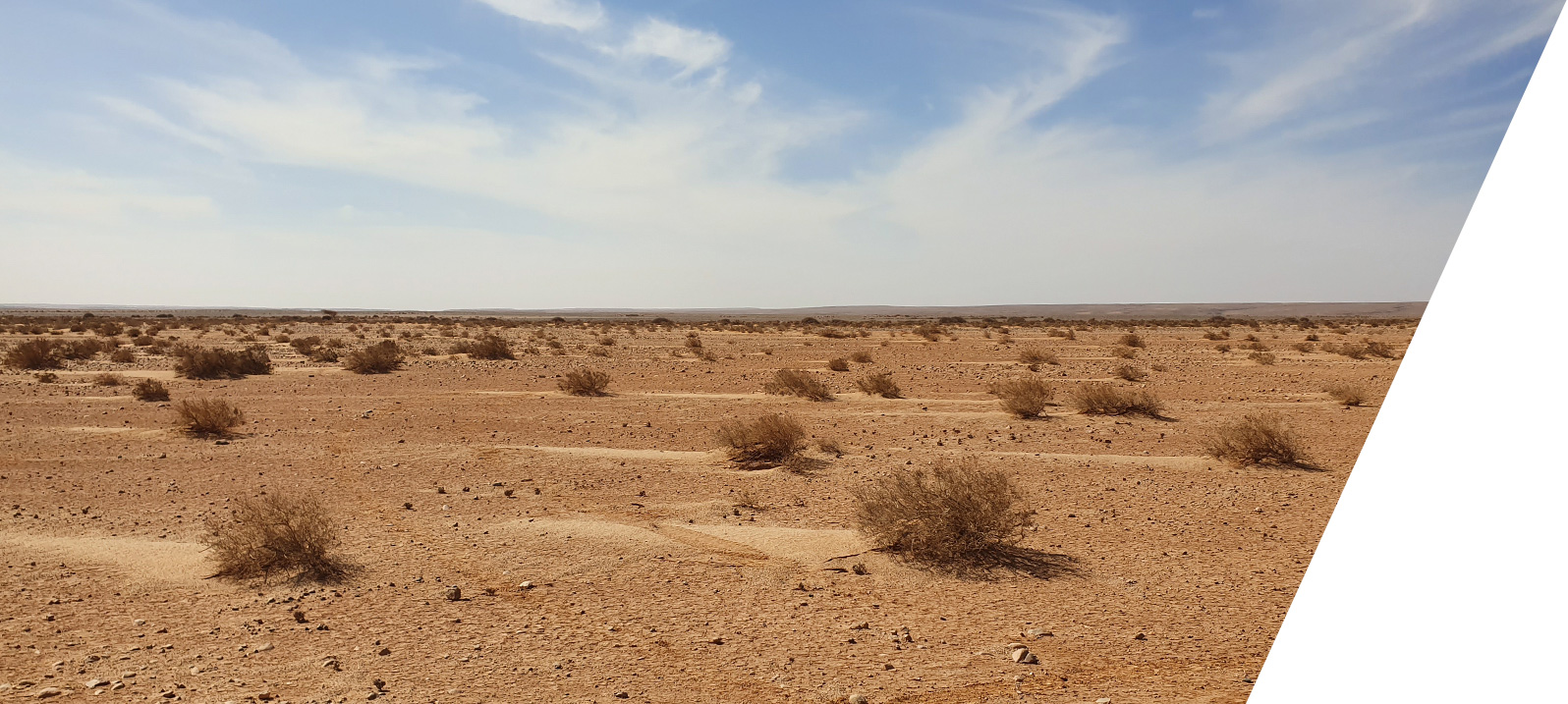What is the Morocco - UK Power Project?
The Morocco-UK Power Project, Xlinks’ flagship project, will supply millions of British homes with renewable energy generated in North Africa and transported via 4,000km of subsea cable.
How?
Xlinks will build a 1,500 sq mile solar, wind and battery facility in the Province of Tan-Tan, Morocco – an area that has twice the solar intensity of the UK and daily convection winds.
When?
The Project will begin supplying energy in the early 2030s.

GENERATING
- 11.5GW clean power from large scale solar and wind facilities providing affordable zero-carbon electricity
- Coupled with 22.5GWh/5GW battery storage


CONNECTING
- Proven HVDC cable technology across a 4000km route under the seabed
- A dedicated source of renewable energy, exclusively to power the UK
- Securing Britain’s energy supply by diversifying from EU interconnectors and LNG dependence, and biomass from North America


TRANSMITTING
- Agreement secured with National Grid for two 1.8GW connectors in Devon
- Powering equivalent of over 7 million homes and once complete supplying 8% of Great Britain’s electricity needs
- Delivering 3.6GW for an average of 19+ hours a day providing firm and flexible energy

Why Great Britain?
Once complete, the Project will provide 8% of Great Britain’s current electricity needs (3.6GW of reliable, clean power), which is enough to power 7m homes. This transformational surge in supply will be crucial given the fast-growing demand for electricity.
By displacing expensive, volatile imported gas, it will stabilise and bring down wholesale prices by 9.3%, as well as reduce the UK’s sector CO2 emissions by c.10%, in its first year of operation.
This will go a long way toward supporting the 81% carbon reduction target – set out by the Prime Minister – by 2035, whilst also helping to meet the 19% increase in demand from 2030 to 2035.
Unlike alternative methods of renewable generation, the Morocco – UK Power Project is dispatchable. It can increase or decrease supply in sub-second response times, which is necessary to balance the grid and will help Britain to avoid balancing costs associated with, for example, having to use Combined Cycle Gas Turbines (CCGTs).
The Project will diversify the UK’s supply, meaning it will not replace or dismiss existing and future projects in the UK – solar and wind generated here is exceptionally valuable. Instead, it complement these measures, firming up Great Britain’s supply.
This is necessary because the sun and wind is intermittent, with long periods – sometimes weeks at a time – when they generate almost no electricity.
These periods are known as Dunkelflaute, a weather phenomenon that is experienced by the UK and most of Northern Europe, but not Morocco.
The Project will also help create a clean power export opportunity for the UK; generate £19.3bn in socio-economic value for the UK over 25 years; and a £5bn injection into the UK supply chain through local procurement. Importantly, it requires no government investment.

Why Morocco?
Morocco has become, over the last 10 years, an international leader in renewable energy. The country has been a forerunner in the development of large, innovative renewable energy projects worldwide.
The strong trading relationship between Morocco and the UK goes back more than 200 years, and Xlinks will strengthen that even further.
The Project is aligned with Morocco’s plan to become a global green hub, unlocking renewable energy export potential to create huge economic and social value. Morocco recognises the value of its wind and solar resources and has great ambition to export such renewable power to Europe.
The Project will realise this ambition and is ready to deliver at scale and at pace.
It will unlock income from the site lease for the Moroccan government; incremental export tax revenues; tens of thousands of jobs, both permanent and temporary during the construction phase; and substantial industrial development through local procurement, while supporting other social and logistical infrastructure within local communities.
The generation facility will be located in the Province of Tan-Tan at a site that is completely unpopulated.

Progress
The Morocco – UK Power Project has 3.6GW connection agreements with National Grid in North Devon and was designated as a project of National Significance in 2023.
It has received competitive tender responses on all major capital expenditure, giving confidence in the programme’s deliverability and value for money.
Appointed financial advisors, J.P. Morgan and Societe Generale, have confirmed the project is well-positioned to secure the required construction financing. Recent market engagement confirmed appetite from commercial banks, ECAs, DFIs and institutional lenders.
So far, it has attracted £100m in development funding from world-class investors like TAQA, Total Energies, Octopus, GE Vernova and AFC.
The underground 14km cable route in Devon – which uses no pylons – has already undergone public consultation.
With regards the cable route, reconnaissance surveys were completed in 2023; Xlinks has designed a safe path through the four major subsea canyons; and final survey campaigns are ongoing to support installation permits.
Although cabling will pass through the territorial waters of Spain, France and Portugal, the procedure is far from the coast and will cause very little disruption, with cables installed below the sea bed.